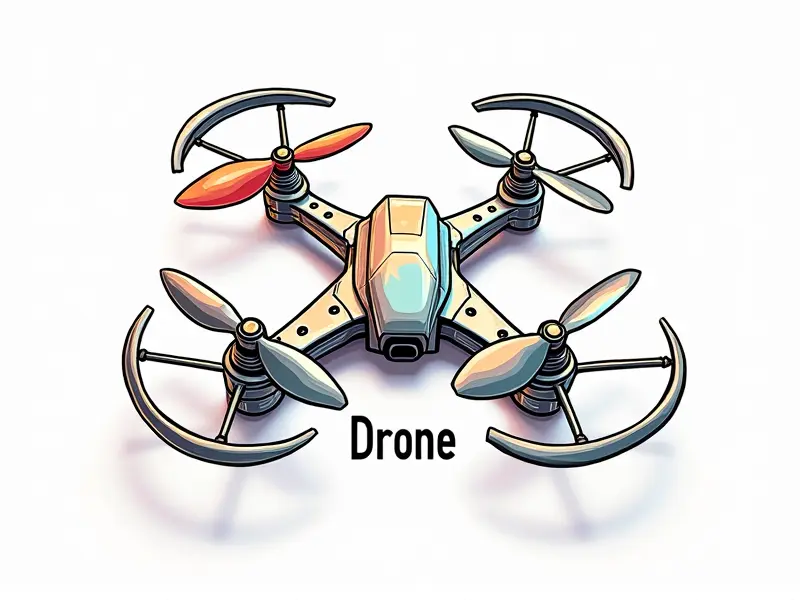Li-Po discharge rate

Understanding LiPo C Ratings Explained
The discharge rate of a Lithium Polymer (LiPo) battery, often referred to as the "C rating," is a critical factor in determining its performance and suitability for various applications. The C rating indicates how quickly a battery can discharge its stored energy relative to its capacity. For instance, if you have a 3000mAh LiPo battery with a C rating of 45C, it means the battery can deliver up to 135A (3000mAh * 45) continuously without damage.
How to Choose the Right LiPo C Rating
Selecting the right C rating for your LiPo battery depends on several factors including the power requirements of your device, the type of application, and safety considerations. A higher C rating allows for more powerful discharges but also increases heat generation and wear on the battery.
Factors to Consider
- Battery Capacity: Larger capacity batteries can support higher discharge rates without overheating.
- Device Power Requirements: Devices with high current draw need batteries capable of delivering that power.
- Safety Margin: Always choose a C rating slightly above your device's requirements to ensure safety and longevity.
Optimal C-Rating for RC Quadcopters & Helis
For radio-controlled (RC) quadcopters and helicopters, the optimal LiPo C rating is crucial for achieving peak performance. These devices require high power output to maintain flight stability and maneuverability.
Quadcopter Example
- Small Quadcopters: 20-45C ratings are suitable for smaller, lightweight models.
- Larger Quadcopters: Higher C ratings like 60-100C may be necessary to handle the increased power demands.
Heli Example
- Cyclic Helicopters: Require high discharge rates for rapid pitch changes and stability, typically around 45-70C.
- Flying Wing Helis: May use slightly lower C ratings due to less power-intensive maneuvers.
Maximizing Flight Time with LiPo C Rates
The discharge rate of your LiPo battery directly impacts flight time. A higher C rating allows for more current flow, which can extend the operational period but at the cost of increased heat generation and potential wear on the battery.
Tips to Maximize Flight Time
- Choose a Higher C Rating: Ensure your battery can handle high discharge rates without overheating.
- Battery Capacity: Opt for batteries with higher capacities to extend flight duration.
The Impact of High C-Rating on Performance
A higher C rating enhances performance by allowing the battery to deliver more power, which is essential in applications like RC vehicles and drones. However, it also increases heat generation and can shorten the overall lifespan of the battery if not managed properly.
Performance Benefits
- Faster Acceleration: High C ratings enable quicker acceleration and response times.
- Better Stability: Higher discharge rates provide more consistent power delivery, improving stability in dynamic conditions.
Common Mistakes in LiPo Discharge Rates
Misunderstanding or mismanaging the C rating can lead to several issues such as reduced battery life and potential safety hazards. Here are some common mistakes to avoid:
Avoid These Common Pitfalls
- Overheating: Using a lower C rating than required can cause excessive heat buildup.
- Battery Strain: Overworking the battery beyond its rated capacity can lead to premature failure.
Beginner's Guide to LiPo Discharge Rates
For beginners, understanding and selecting the correct C rating for your LiPo batteries is crucial. Start by identifying the power requirements of your device and choosing a battery with an appropriate C rating that matches these needs.
Steps for Beginners
- Determine Device Power Needs: Calculate or estimate the current draw required for optimal performance.
- Select Suitable Battery: Choose a LiPo battery with a C rating that matches your device's requirements.
Why Overheating Occurs with Low C Ratings
Using a low C rated LiPo battery in applications requiring high discharge rates can lead to overheating. This occurs because the battery cannot efficiently manage the current demand, causing excessive heat generation and potential damage.
Reasons for Overheating
- Inadequate Current Flow: The battery struggles to deliver sufficient power, leading to inefficiency and heat buildup.
- Battery Strain: Continuous high discharge rates can overwork the battery's internal components.
Boosting Efficiency with Correct LiPo Discharge Settings
To optimize performance and longevity of your LiPo batteries, it is essential to set up the correct discharge settings. This involves selecting a C rating that balances power delivery with thermal management.
Optimal Settings
- Battery Capacity Matching: Ensure the battery capacity aligns with the device's energy requirements.
- C Rating Adjustment: Adjust the C rating based on real-time performance needs and thermal conditions.
Tips for Selecting Optimal LiPo Batteries
Selecting the right LiPo battery involves considering multiple factors such as capacity, discharge rate, and intended use. Here are some tips to help you make an informed decision:
Selection Tips
- Capacity First: Prioritize selecting a battery with sufficient capacity for your application.
- C Rating Second: Choose a C rating that matches the power requirements of your device.
Maximizing Battery Life with Proper LiPo Discharge
To prolong the life of your LiPo batteries, it is crucial to manage discharge rates effectively. This involves selecting appropriate C ratings and monitoring thermal conditions during use.
Maintenance Tips
- Monitor Temperature: Keep an eye on battery temperature to prevent overheating.
- Proper Storage: Store batteries in a cool, dry place when not in use.
Conclusion
Maintaining optimal LiPo discharge rates is key to achieving peak performance and extending the lifespan of your batteries. By understanding the impact of C ratings on power delivery and thermal management, you can make informed decisions that enhance both efficiency and longevity. Always prioritize selecting suitable battery capacities and matching them with appropriate C ratings for your specific applications.

